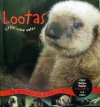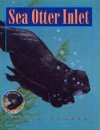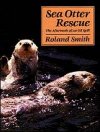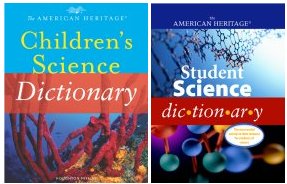Sea Otters, Kelp, and Killer Whales Additional Information
You can learn more about the Seattle Aquarium at www.seattleaquarium.org/. Activities for kids can be found at www.seattleaquarium.org/kids/. Learn about how the sea otter pup Calypso joined the aquarium family at www.seattleaquarium.org/news/releases/otter082803.asp (Seattle Aquarium).
You can watch sea otters live at www.mbayaq.org/efc/efc_fo/fo_ottr_cam.asp (Monterey Bay Aquarium).
Estes, James A. 2002. What’s wrong with the California sea otter. Sound Waves (February). Available at soundwaves.usgs.gov/2002/02/research.html (U.S. Geological
Survey).
McNulty, Tim. 1998. Washington’s otter comeback. Defenders (Summer). Available at www.defenders.org/magazinenew/Issues/seaotter98.pdf.
Rozell, Ned. 1998. Killer whales develop a taste for sea otters.
Alaska Science Forum (Dec. 10). Available at www.gi.alaska.edu/ScienceForum/ASF14/1418.html (University of Alaska, Fairbanks Geophysical Institute).
Stephens, Tim. 1998. Killer whales feed on sea otters, pushing coastal ecosystems off kilter. Currents (Oct. 19). Available at www.ucsc.edu/oncampus/currents/98-99/10-19/killer.htm (University of California, Santa Cruz).
Washington State Sea Otter Recovery Plan
wdfw.wa.gov/wlm/diversty/soc/recovery/seaotter/seaotter.htm
Washington Department of Fish and Wildlife
Sea Otter Research at WERC
Western Ecological Research Center, U.S. Geological Survey
Protecting the California Sea Otter
The Otter Project
For teachers and parents: Sea Otter Education Unit (lesson plans)
www.kidsplanet.org/tt/seaotter/home.html
Defenders of Wildlife
Books recommended by SearchIt!Science:
 |
Lootas, Little Wave Eater: An Orphaned Sea Otter’s
Story — Clare Hodgson Meeker
Published by Sasquatch Books, 1999.
Sea otters were almost extinct 100 years ago. This is the story of an orphaned baby sea otter. Read how it was nursed to health at the Seattle Zoo and how the zoo team successfully introduced it to their main sea otter tank. Learn about sea otters along the way—what they eat, how they care for themselves, and more. |
 |
Sea Otter Inlet — Celia Godkin
Published by Fitzhenry and Whiteside, 1997.
What happens when the balance of nature is upset? Examine the complex relationship between plants and animals of the Pacific Northwest. Meet a colony of sea otters that live in a quiet inlet, unaware of the danger that they will soon experience. Find out what happens when hunters come to kill the otters for their warm fur. When the otters are gone, the inlet is overrun with sea urchins that eat the kelp forest. Eventually the sea otters return and the balance of nature is restored. |
 |
Sea Otter Rescue: The Aftermath of an Oil Spill — Roland Smith
Published by Cobblehill Books/Penguin Putnam, 1990.
In 1989, disaster struck just off the coast of Alaska. An oil tanker hit some rocks and created the largest oil slick in United States history. The sea otters were in particular danger because of the special way that they control their body temperature. This is the story of their rescue. Animal conservationists captured the sea otters and placed them in a rescue center where they were cleaned and watched until they could be released. |
Power Words
ecosystem All the living things in a community and the environment in which they live. An ecosystem includes producers, consumers, and decomposers and may be as small as a pond or as large as a rain forest. Climate, the kind of soil, and the main sources of energy are all part of an ecosystem.
extinct 1. No longer existing or living. Plants and animals may become extinct because of changes in climate, destruction of their habitat, natural disasters, or disease. 2. No longer active or burning. An extinct volcano is not able to erupt anymore.
parasite A living thing that can only exist on or in a different kind of living thing, called the host. Parasites rely on their hosts for food and are usually harmful to them. Lice, ticks, and fleas are parasites of humans and other mammals.
Copyright © 2002, 2003 Houghton-Mifflin Company. All rights reserved. Used with permission.
